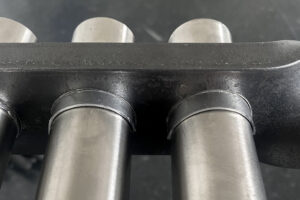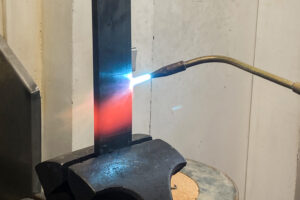Corrosion is usually seen as failure — a threat to infrastructure, machines, and materials. But what if it could be used productively?
This bench explores a specific form of material decay: galvanic corrosion. When two dissimilar metals, such as aluminum and steel, come into contact in the presence of moisture, the less noble metal corrodes more rapidly. In the case of aluminum, this process produces a exceptionally hard oxide layer that expands as it forms, (ultimately locking the two metals together.)
In this design, stainless steel tubes and a carbon steel connector are fused by an inserted aluminum wedge, which expands as it corrodes and creates the bond.
Inspired by stuck bicycle seat-posts, this project turns a typically undesired reaction into a joining method. The result is a weld-free, flat-packable bench that finishes assembling itself through weather and time.
Korrosion wird normalerweise als Versagen betrachtet – als Bedrohung für Infrastruktur, Maschinen und Materialien. Aber was, wenn man sie produktiv nutzen könnte?
Diese Bank untersucht eine spezielle Form der Korrosion: die Galvanische Korrosion. Wenn zwei unterschiedliche Metalle – z.B. Aluminium und Stahl – in Anwesenheit von Feuchtigkeit miteinander in Kontakt kommen, korrodiert das unedlere Metall schneller. Im Fall von Aluminium entsteht dabei eine außergewöhnlich harte Oxidschicht, die sich beim Entstehen ausdehnt und die beiden Metalle schließlich miteinander verkeilt.
In diesem Entwurf werden Edelstahlrohre und ein Verbindungsteil aus Kohlenstoffstahl durch einen eingesetzten Aluminiumkeil verbunden, der sich beim Korrodieren ausdehnt und so die feste Verbindung schafft.
Inspiriert von festgefressenen Sattelstützen bei Fahrrädern verwandelt dieses Projekt eine normalerweise unerwünschte Reaktion in eine Verbindungsmethode. Das Ergebnis ist eine schweißfreie, flach verpackbare Bank, die sich durch Witterung und Zeit selbst fertig zusammenbaut.
THE PROJECT
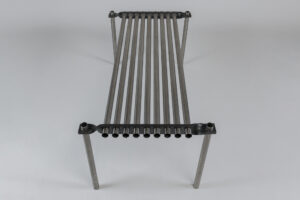

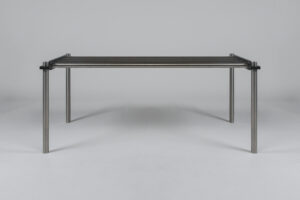
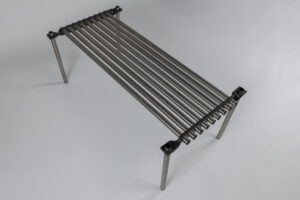
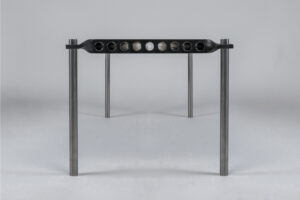
THE PROCESS
